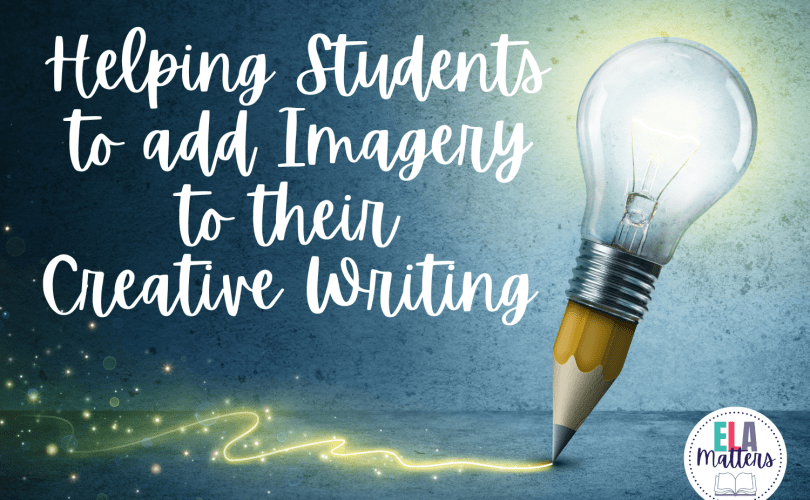Over the years, my students have had some of the most imaginative and original creative writing ideas, but they often have difficulty finding the right words to express these ideas in a way that allows the reader to fully immerse themselves in their literary worlds.
Incorporating activities for students to practice infusing imagery into their writing has been a big game-changer in the quality of their writing overall. First, I explain to students that imagery uses descriptive details that appeal to the five senses and that adding these details helps to expand ideas which creates easier visualization and connections for the reader. A passage without imagery will merely explain that an apple pie is sitting on the counter for example, whereas a passage that uses imagery to convey the smell and taste of the crisp pie crust and warm cinnamon apple mixture, transports you to your own experiences and memories with these senses and you can easily put yourself into the scene.
One of my students’ favourite activities to practice imagery has been using an imagery chart, which is basically a chart with various picture prompts and space beside each for details that relate to the five senses. For each picture I ask the class to brainstorm the sights, smells, sounds, tastes, and feelings as though they are in the picture, prompting them with questions like, “what does it sound like?” “What does it taste like?” and so on.

Once we have filled in the chart with lots of sensory details, I ask students to choose one of the pictures and write a descriptive passage in first or third person perspective using as many of the details from the chart as they can. The resulting passages are always a thrill to read. Students usually surprise themselves with how detailed and vivid their writing is. At that point I invite students to share their writing with the class. It’s always interesting to hear two passages about the same picture to see how different and similar they are using most of the same imagery details.
This activity makes for a great writing warm up or mini-lesson, but it could also be built upon to become the beginning of a larger piece of writing that students work on.
If you are looking for more help with supporting students through creative writing, you can check out this post for ways to help students brainstorm for creative writing and my Short Story Writing package for students with handouts for each stage of the writing process.

